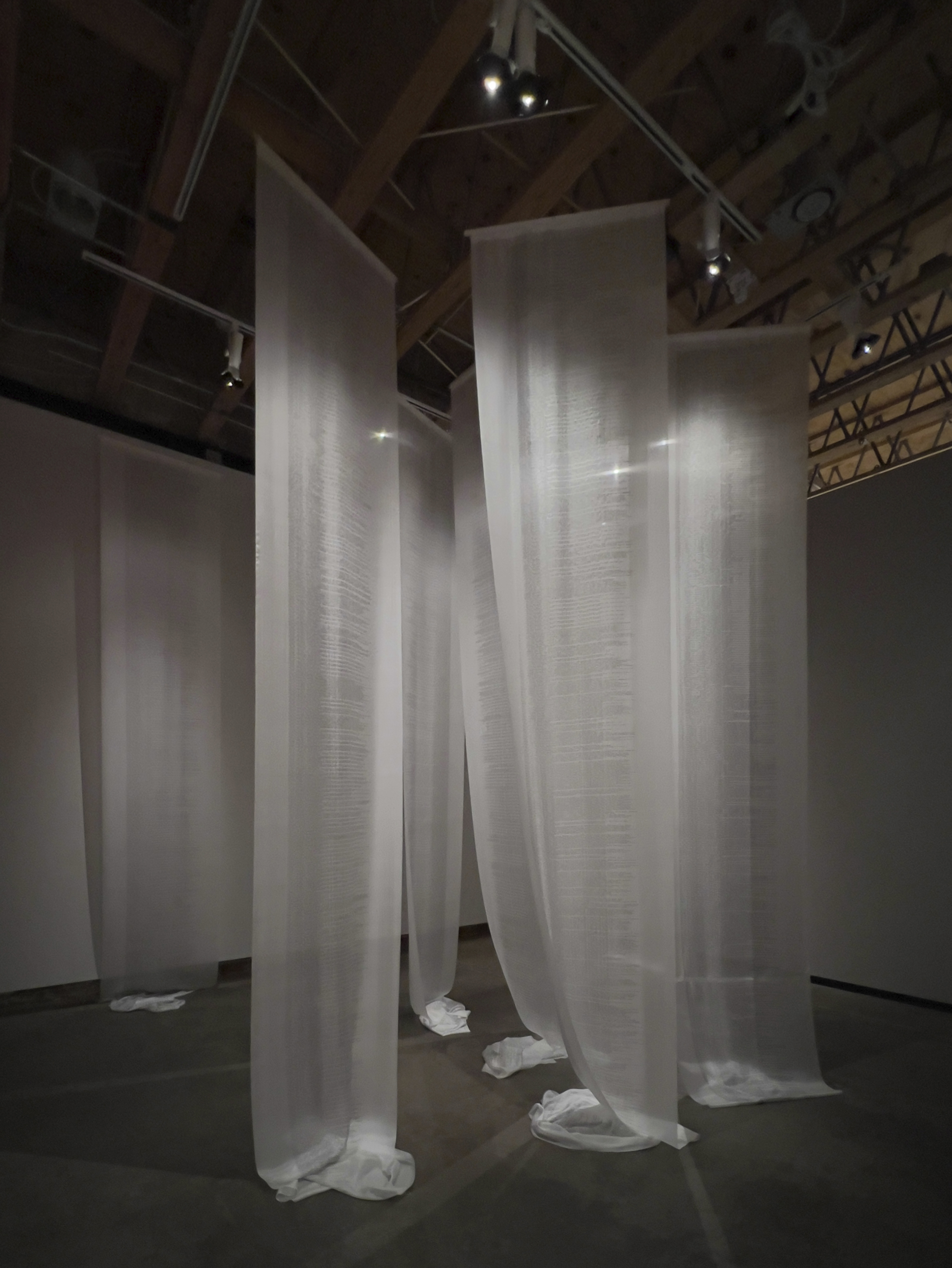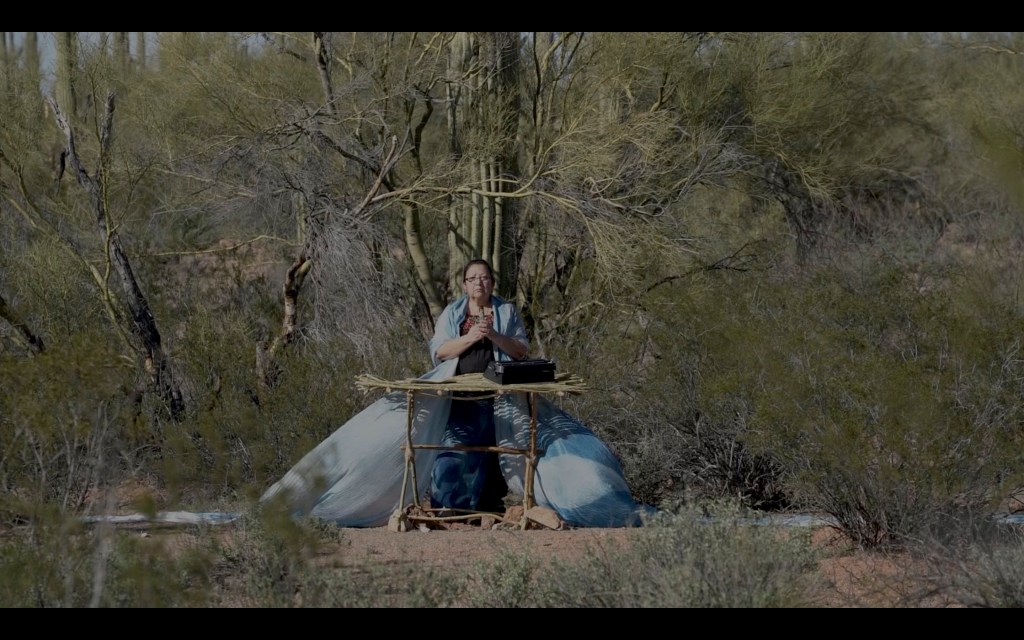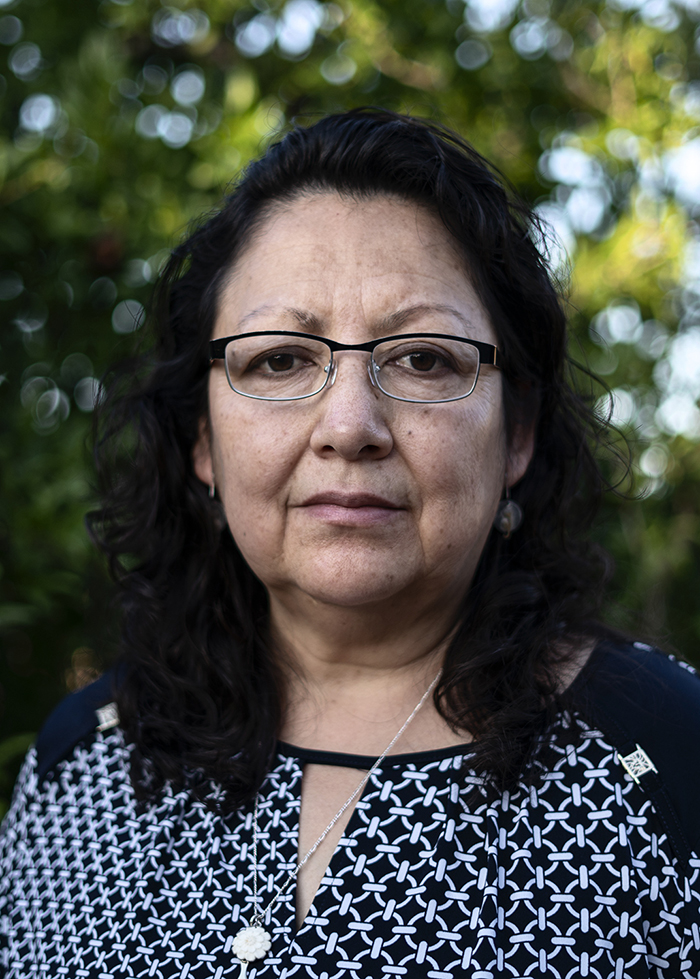
Courtesy of Elizabeth Pineda

Audio By Carbonatix
When Elizabeth Pineda was in the midst of her MFA program in photography at Arizona State University, she began thinking about how to expand a project beyond her own experience because, she says, “the immigrant story is many people’s story.”
Her research took her to the migrant death maps compiled by Humane Borders. Late one night, “around 2, 3 in the morning,” while trying to download the latest version of the map as reference, she inadvertently got the HTML version, which instead of charting red dots on a map of Arizona’s border and migrant travel corridors, listed every recorded migrant death with coordinates, date of discovery, condition of remains at time of discovery, presumed cause of death, and name. In the many cases for which a name could not be determined, the entry is marked “sin nombre.” This record of deaths stretches on for many hundreds of lines.
“The map was transformed with the truth of what it holds,” Pineda says. “Those little red dots on the map were no longer dots. They were human beings who perished in the desert. I sat there and wept at the sight.”
That encounter with the list became the basis for Pineda’s work “Reverencia: Arizona Migrant Death Mapping,” a collection of long silk scrolls with that document’s text printed on them, now on display at the Phoenix Art Museum as part of Pineda’s exhibit for having won one of two 2024 Sally and Richard Lehmann Emerging Artist Awards.
This year, make your gift count –
Invest in local news that matters.
Our work is funded by readers like you who make voluntary gifts because they value our work and want to see it continue. Make a contribution today to help us reach our $30,000 goal!
“It was really intense,” Pineda says of the application for the award. She and her husband were in El Paso, Texas, for the Border Biennial at the El Paso Museum of Arts. Pineda was showing an earlier, smaller iteration of the project with three silks.
“I wanted to go to Juarez,” Pineda recalls of that weekend. “I wanted to go photograph the border. I had all these ideas because I was going to be in such proximity to a different part of the border. Instead, I spent that whole two, three days working on nothing but the application.”
After winning the award, when it came time to set up the pieces in the exhibit space, Pineda worked with the installation team.
“I brought the silks in rolled in a literal scroll,” she says. “And because they have a raw edge, they tend to start to unravel. I had to have scissors on hand to trim when necessary. Otherwise, if it catches, it can just start snagging all the way up.” Visitors to the exhibit are likely to notice that the silks are long enough that some of the material forms little mounds on the floor. “That mounding, that collapse is really important for me as an analogy of the body collapsing,” Pineda says.
Across from the silks is a small desk made from the slender branches of a fallen palo verde tree and a video screen playing a 12-minute video of selections from a day-long ceremony Pineda performed in the Ironwood Forest National Monument.
In “Ceremonia en Esta Tierra Sagrada (Ceremony on This Sacred Life),” Pineda, with a blue silk cloak 20 yards long draped across her shoulders, calls out the names of migrants who died crossing the desert and types their names on handmade corn-husk paper. She calls and types “sin nombre” for the many people whose names are not known.
Courtesy of Elizabeth Pineda
“This ceremony has nothing to do with myself,” Pineda says. “It’s about honoring those whose names I’m calling, or those whose names I don’t know. I’m trying to give voice to them.”
She made the cloak blue with a photosensitive solution similar to that used for developing photographs. By leaving the cloak out in the desert sun for long periods with rocks, plants and other natural objects on top, she developed the cloak to a bright blue with faint traces of where the objects had been placed.
“The desert landscape is visible,” Pineda says of the cloak. “You can see hints of the plants that were in the desert when I made it.” Blue was Pineda’s color of choice because of its association with grief and sadness, and she chose this photosensitive method for its metaphorical resonance.
“Exposure to the sun is what makes these images appear,” she says of the process. “Then you need to wash them in water. And these two elements are at odds with what happens to these people. Exposure is oftentimes what takes them because they don’t have water.”
Pineda performed the ceremony over the course of many visits to Ironwood Forest National Monument, at different times of day, so that the video chronicles a recitation of names as well as the day’s journey into night, with the camera farther and farther from her as the daylight wanes.
To the right of the wall displaying “Reverencia” hangs “Un Libro de Familia, 02: A Rewriting of the Migrant Death Mapping Document,” a selection of the handmade cornhusk papers on which are typed names of migrants who died trying to cross the harsh desert landscape between the border and the Phoenix area.
“Corn is a gift,” Pineda says of the material she chose for her papermaking. “Corn is one of the three sisters. Traditionally in Mexico, the three sisters that feed and nourish are corn, squash and beans. It’s a very primal thing that gives sustenance and is a gift from Mother Earth.”
Pineda’s mother was from Oaxaca, Mexico, where “corn is regarded as a gift from the gods.” She relates that in Mexico there is a saying that without corn, there is no country. “I also think about the political ramifications of corn. When NAFTA happened, it took away from farmers. It took away from them being able to grow their crops, which caused a lot of the migration.”
Making paper from corn husks is laborious. “There were 10 different sessions of papermaking,” Pineda recalls. “I would start on a Thursday and end on a Monday.” There would be two days of cutting, followed by a day of soaking, a day of cooking and then a day of pulling sheets one by one. “I would start at 8 in the morning and finish at 3 or 4 in the morning the following day.” The sheets then needed a few days to dry.
That laboriousness is important to Pineda’s conception of the project.
Elizabeth Pineda
“I wanted to honor, through the material and my labor, their labor,” she says. “Oftentimes when these people are migrating, the only thing they know that they’re going to do is work, and they have a strong work ethic. And so, through my own labor, I want to honor that work ethic that never saw itself to fruition, that never got to experience the dream of doing that.” Because Pineda did all this work at home, with tools available to her (and not industrial machinery used for paper one might buy for a printer), irregularities and tears occur in the sheets. “So I began mending a lot of paper to save the sheets. And I began thinking about the disregard of the people.” She decided that she wanted the tiny tears and irregularities and to mend and recover what otherwise would have been deemed unworthy and discarded, again with attention to metaphorical resonance for the lives and deaths of the migrants whose names the project records.
The last piece making up the exhibit is “La Luz del Desierto (Light of the Desert),” a collection of lumen prints made with plants native to the Sonoran and Chihuahan Deserts: mesquite, Arizona fescue, palo verde, rama blanca, ironwood, gobernadora, and giant sacaton. Pineda placed pieces of these plants on photosensitive paper that she left out in the sun for one to weeks, whereas the typical exposure time for prints of this kind is several hours to a day. “I really wanted to push the process to see what I would get,” she says of long exposure periods, which are meant to correspond to the time it might take a migrant to traverse the border region’s desert corridors. For most photography, the paper is at some point treated with a fixer solution to halt its chemical reaction to light and stop the image from changing further (fix it). Pineda, though, opted not to fix the image, so the plants leave “marks that are going to change, impressions that will fade” as the prints’ chemistry continues to react to further light exposure. As with the blue cloak, the photosynthetic exposure of art materials corresponds to the environmental exposure that migrants face in these areas-a kind of exposure that can often be fatal. And like the remains of those who perish, the lumen prints temporarily preserve what Pineda describes as an “aura,” though this fades, leaving the desert landscape, simultaneously a “harsh environment” and “place of beauty,” as a witness that has “taken in all that pain.”